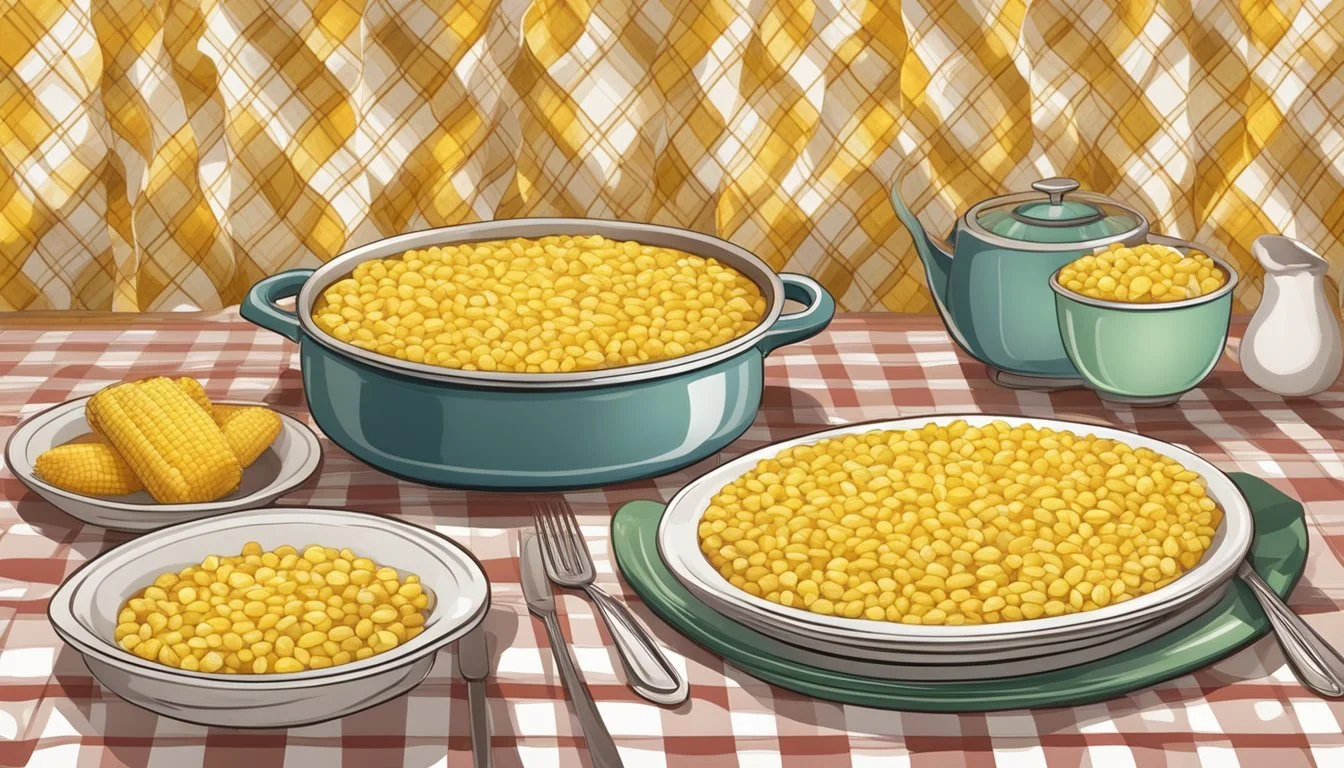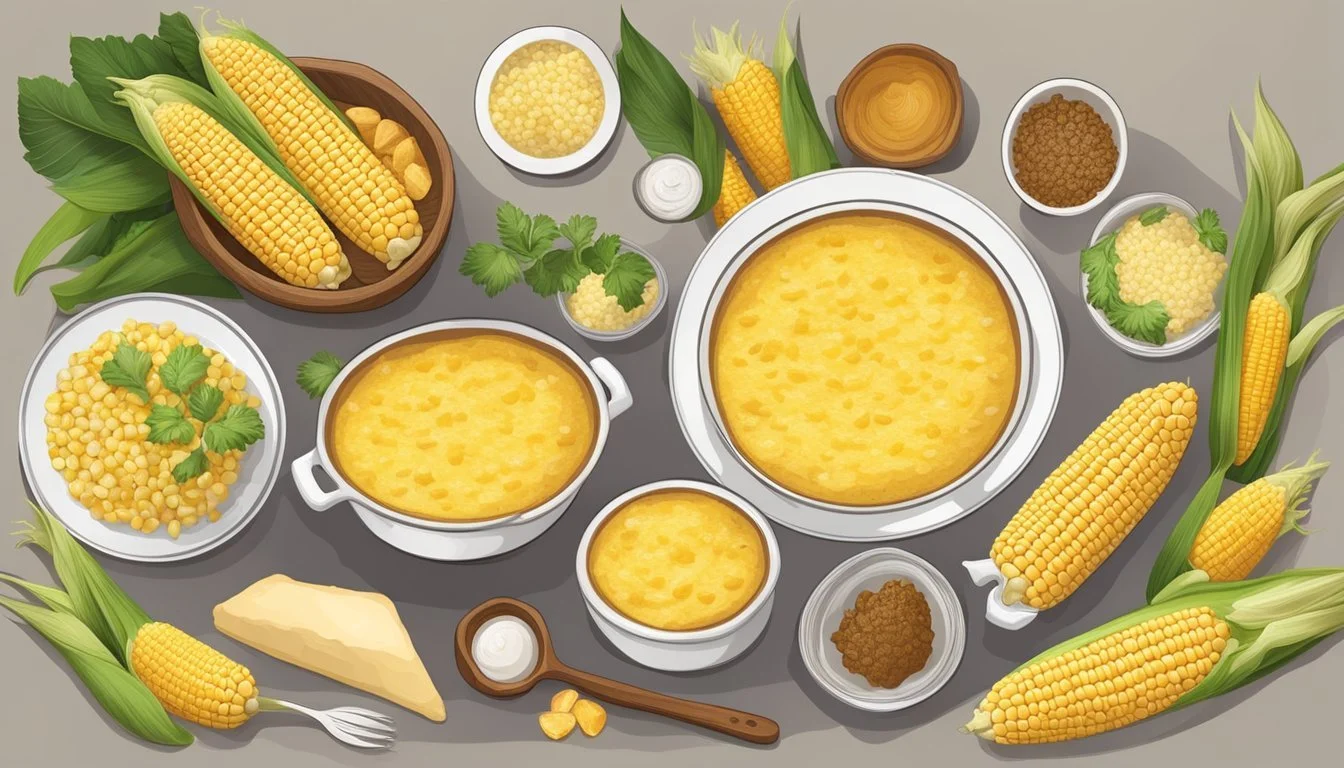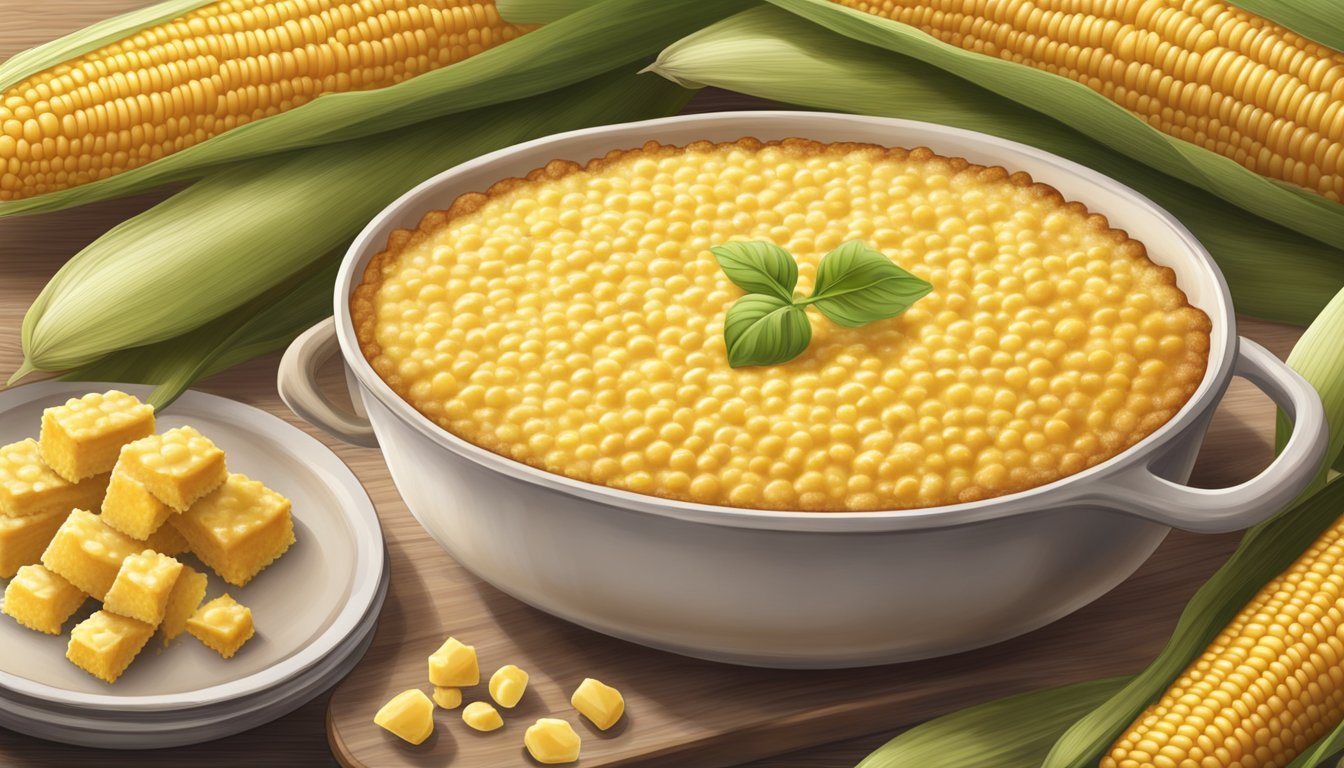Is Corn Pudding Gluten-Free?
Understanding Its Dietary Impact
Corn pudding, a comfort food staple in many households, often prompts the question of whether it is suitable for a gluten-free diet. Gluten, a protein found in wheat, barley, rye, and their derivatives, is a common ingredient in many foods, making it challenging for individuals with celiac disease or gluten sensitivities to find compatible dishes. Corn pudding's primary ingredient, as the name suggests, is corn—which is naturally gluten-free. However, the gluten-free status of a corn pudding heavily depends on the rest of its ingredients and the potential for cross-contamination.
When making or purchasing corn pudding, one must pay close attention to the ingredients list. Some recipes for corn pudding may call for flour as a thickening agent, which, unless specified, typically contains gluten. Furthermore, prepackaged cornmeal or premixed corn pudding products may also include additives or flavorings that contain gluten. Thus, it is not just the main ingredients but also these additives that need to be scrutinized to ensure that the corn pudding aligns with a gluten-free diet.
In crafting a gluten-free version of corn pudding, it is essential to use a gluten-free flour mix or cornstarch as a substitute for traditional flour. One must also verify that any dairy or non-dairy products such as milk, butter, or sour cream do not have any hidden gluten. By selecting the right ingredients and checking the labels carefully, it is entirely possible to enjoy a delicious, gluten-free corn pudding.
Understanding Gluten Free Diets
Gluten free diets are essential for individuals with gluten-related disorders such as celiac disease. On a gluten free diet, one must avoid all forms of gluten, a protein found in wheat, barley, rye, and their derivatives. Foods that are naturally gluten free include:
Fruits and vegetables
Meat and poultry (not breaded or marinated)
Fish and seafood (not breaded)
Dairy
Beans, legumes, and nuts
When assessing ingredients for a gluten free diet, individuals should scrutinize food labels for hidden sources of gluten. Common gluten-containing ingredients to avoid include malt, modified food starch, and certain soy sauces.
In terms of nutrition, maintaining a balanced diet is crucial while following a gluten free regimen. Gluten free does not necessarily mean healthy, as some gluten free products may be high in sugar or fat to compensate for texture and flavor. To ensure adequate nutrition, those on gluten free diets should consider:
Whole, unprocessed foods
Gluten free grains like rice, quinoa, and buckwheat
Enriched or fortified gluten free products
Gluten free food preparation is also vital. Cross-contamination with gluten-containing foods can occur during manufacturing or cooking. It's important to use separate utensils and cookware when preparing gluten free foods to ensure they remain safe for consumption.
What Is Corn Pudding?
Corn pudding is a quintessential American side dish, cherished for its creamy texture and sweet corn flavor. It is traditionally made from a blend of cornmeal, milk, and eggs, and is baked until it reaches a custardy consistency.
Historical Background
Corn pudding has its roots in Native American cuisine, which was adapted by European settlers. It was originally a simple dish composed of corn, water, and any available additives but has evolved over time. Today, it incorporates diverse ingredients, such as sugar and butter, showcasing a rich culinary evolution.
Popularity and Occasions
Corn pudding is a beloved dish at various family gatherings and holiday dinners, especially during Thanksgiving, Christmas, and Easter. Its comforting taste and texture make it a favorite to accompany roasted meats and vegetables. Its popularity spans multiple regions in the United States, securing its place as a staple for festive and celebratory occasions.
Essential Ingredients for Corn Pudding
Corn pudding is a delightful dish that hinges on the correct balance of corn, binding agents like eggs and dairy, as well as carefully selected sweeteners and flavorings to create its signature texture and taste.
Corn: The Star of the Dish
Corn is the centerpiece of any corn pudding recipe. It can be used in various forms: fresh corn kernels, frozen corn, or canned corn. For the best results, fresh sweet corn is preferred for its natural sweetness and crisp texture. Whether fresh or preserved, it's important for the cook to ensure that the corn is well-drained of any excess liquid to maintain the pudding's consistency.
Binding Agents: Eggs and Dairy
Eggs are a crucial component as they help to bind the ingredients together. Typically, for a traditional corn pudding, two eggs per recipe suffices. Alongside eggs, dairy products like milk, butter, and sometimes cream-style corn are used to enrich the dish, adding creaminess and helping to set the pudding upon baking. In recipes accommodating dietary restrictions, substitutes like non-dairy milk and butter are also common.
Dairy Ingredients
Milk: ½ cup (dairy or non-dairy alternatives)
Butter: 1 to 2 tablespoons (or non-dairy equivalent)
Optional: Cream-style corn for added creaminess.
Sweeteners and Flavoring
Sweeteners are added to complement the natural sweetness of the corn. Granulated sugar or light brown sugar are commonly used, with quantity varying based on the desired level of sweetness. It typically ranges from 1/3 to 1/2 cup. For a natural and unrefined alternative, honey may also be used. Vanilla extract and salt are essential flavor enhancers, each lending a hand to the overall depth of flavor in the dish.
Sweetening and Flavor Ingredients
Sugar (Granulated or Light Brown): 1/3 to 1/2 cup
Honey: As an alternative sweetener
Vanilla Extract: 1 teaspoon
Salt: A pinch to balance the flavors
To make a gluten-free corn pudding, one should pay close attention to ingredients such as flour mixes or baking powder to ensure they do not contain gluten.
Is Corn Pudding Gluten-Free?
Corn pudding can be a delicious gluten-free dish when the right ingredients are chosen. Avoiding gluten-containing elements and opting for gluten-free alternatives ensures that those with gluten sensitivities can enjoy this comfort food staple without worry.
Gluten Containing Ingredients to Avoid
When making gluten-free corn pudding, it is crucial to avoid the following gluten-containing ingredients:
All-purpose flour: Often used as a thickener, it contains gluten.
Gluten-rich cornmeal or cornbread mixes: Some brands include wheat flour or other gluten-containing grains.
Baking powder: Some brands may contain gluten, so it's important to choose gluten-free labeled baking powder.
Safe Gluten-Free Alternatives
To create a gluten-free corn pudding, one must use ingredients such as:
Gluten-free flour: Acts as a substitute for all-purpose flour to provide structure without gluten.
Cornstarch: A safe thickening agent for those concerned with gluten.
Gluten-free cornmeal: Ensures the corn pudding remains free of gluten.
Kosher salt: Preferred for its purity and lack of additives.
Finding Gluten-Free Cornbread Mixes
Seeking out gluten-free cornbread mixes is essential for a successful gluten-free corn pudding recipe. These mixes should be verified gluten-free on the packaging. Here's a simple checklist for selection:
Packaging states "Gluten-Free"
No wheat, barley, or rye ingredients
Certification seals, if available, from reputable gluten-free organizations
Preparing and Baking Corn Pudding
Crafting a delightful corn pudding involves specific mixing and baking methods to ensure a delicious, golden-brown result. Particular attention to the preparation of ingredients and oven conditions will lead to an ideal corn pudding texture and flavor.
Mixing and Baking Techniques
To begin, one should preheat the oven, typically to 350°F. First, blend together the wet components which often include eggs, sour cream, and butter. This creates a smooth, cohesive base. Next, carefully integrate the dry mixture, including sugar and cornstarch or gluten-free flour, to avoid lumps. For an evenly distributed corn flavor throughout the pudding, one must fold in the corn kernels gently into the batter.
Once the mixture is uniform, it should be transferred to a well-greased casserole dish. The size and depth of the baking dish are important; usually, recipes call for either a 9x13 inch or a 7x11 inch baking dish. Using the right dish ensures the batter cooks evenly and achieves the desired consistency.
Ideal Baking Conditions
Uniform heat distribution within the oven is crucial for the corn pudding to bake properly. Position the dish in the center of the oven rack to allow for this equal heat surround. The baking duration can vary, but it typically falls between 30 to 45 minutes. One knows their pudding is done when it has a golden-brown surface and a set, but slightly jiggly center.
For certain recipes, covering the dish with aluminum foil can prevent excessive browning on top. After the initial bake, the foil can be removed, allowing the top to reach that coveted golden-brown finish. The final product should be allowed to rest a few minutes before serving, to settle into the perfect consistency.
Serving Corn Pudding
Corn pudding, a delightful dish typically golden in color and served warm, becomes the highlight of any meal through its versatility in serving options and ease of storage and reheating.
Accompaniments and Pairings
When considering Accompaniments and Pairings for corn pudding, one should think about balance and complementing the dish's rich texture and sweet flavor profile. It is commonly served alongside holiday favorites. Here are some noteworthy pairings:
Protein: A slice of roast turkey or a piece of glazed ham makes for a classic pairing.
Vegetables: Steamed or sautéed green beans provide a crisp contrast.
Servings: To ensure each guest gets an ample taste, one might consider slicing the corn pudding while it's warm in portions sized just right for individual servings.
Storage and Reheating Tips
With regards to Storage and Reheating Tips, corn pudding maintains its quality when stored properly. Here's how:
Storage: Make sure the corn pudding has cooled to room temperature before covering and placing it in the refrigerator. It stays fresh for up to 3-4 days.
Reheating: Leftovers should be reheated gently. Bring them to a desired temperature in an oven preheated to 350°F for best results, ensuring the dish remains moist and creamy.
Careful not to overheat as the edges can dry out, serving the pudding warm is key to savoring its comforting texture.
Nutritional Profile and Dietary Considerations
Corn pudding is a dish that can vary greatly in its nutritional profile depending on the ingredients used. This section explores the caloric content and potential health benefits of traditional corn pudding, as well as ways to adapt the recipe for specific dietary restrictions.
Caloric Content and Health Benefits
Corn pudding traditionally contains corn, milk, eggs, and sugar, ingredients that contribute to its overall calorie count. On average, a serving can range from 200 to 300 calories, depending on the recipe and serving size. Corn provides a good source of fiber and vitamins, such as B vitamins, which can contribute to energy production and overall health.
Adapting for Dietary Restrictions
For individuals requiring gluten-free diets, corn pudding can be easily adapted by ensuring that all ingredients, such as baking powder or flour used as thickeners, are labeled gluten-free. To adapt the dish for a dairy-free diet, plant-based alternatives like almond milk or coconut milk can replace cow's milk, and dairy-free butter substitutes can be used. For a low FODMAP diet, which often requires the limitation of lactose, choosing lactose-free dairy products or dairy alternatives is essential. To improve the nutrition profile for those watching their calorie intake, reductions in sugar or the use of sugar substitutes alongside low-fat milk options can be helpful.
Recipes and Variations
When considering whether corn pudding is gluten-free, the key lies in the ingredients list. Traditional recipes often contain flour, a gluten-containing ingredient, but many variations and adaptations for gluten-free diets are available.
Classic Corn Pudding Recipes
Classic corn pudding recipes typically feature a simple yet rich combination of corn, milk, eggs, and butter, with sugar added for a touch of sweetness. To make corn pudding gluten-free, one must ensure that all ingredients are free of gluten contamination. Flour, which is often used as a thickener, should be replaced with a gluten-free alternative such as cornstarch or a gluten-free flour blend.
Ingredients:
Corn: fresh, canned or cream style
Milk: whole milk for a creamy texture
Eggs: act as a binding agent
Butter: unsalted and melted
Sugar: to taste
Gluten-free thickener: for instance, cornstarch
Innovative Twists on Traditional Recipes
Innovative twists to the classic corn pudding can include the addition of ingredients like sour cream for extra creaminess, green chilies for a Southwest kick, or even cheese for a savory depth. One recipe swaps traditional flour with crushed gluten-free crackers to achieve the desired consistency without the gluten. Fresh herbs or cheese can also be folded in for a flavor boost.
Ingredients:
Gluten-free crackers: crushed as a thickener and for texture
Sour cream: for richness
Additional flavors: cheese, green chilies, fresh herbs
It's important for individuals to review all ingredients used in recipes to ensure they are gluten-free, especially when adapting traditional recipes that originally include gluten.
Common Questions About Corn Pudding
Corn pudding is a cherished side dish, often enjoyed for its creamy texture and sweet corn flavor. When tackling this dish, cooks frequently encounter questions about its preparation and customization options, particularly in relation to dietary requirements.
Preparation FAQs
Can corn pudding be frozen? Yes, corn pudding can be frozen. It should be cooled completely before wrapping tightly in plastic wrap or aluminum foil. For best results, corn pudding should be consumed within 1-2 months of freezing.
Should corn pudding be jiggly after baking? A slight jiggle in the center of the corn pudding is normal as it will continue to set as it cools. If it’s excessively jiggly, it may need additional baking time.
How should I store leftover corn pudding? Leftovers should be stored in an airtight container in the refrigerator and are best eaten within 3-4 days.
Corn Pudding Storage Location Duration Freshly Baked Counter Until cooled Leftovers Refrigerator 3-4 days For Longer Storage Freezer 1-2 months
Is corn pudding seasonally dependent? While fresh corn is readily available during corn season, typically in the late summer, frozen or canned corn can be used to prepare corn pudding year-round, ensuring it's an easy side dish to enjoy anytime.
Substitution FAQs
Can I make corn pudding vegetarian? Traditional corn pudding recipes are inherently vegetarian, consisting mainly of corn, milk, eggs, and sugar. However, always check for hidden ingredients like lard or gelatin in pre-made mixes.
Are there substitutes for corn if it’s not corn season? Frozen corn or canned corn make excellent substitutes. They are convenient options that can allow the dish to retain its flavor and texture beyond the fresh corn season.
Can I add additional ingredients to my corn pudding? Indeed, ingredients like red bell pepper can be added for a pop of color and a slight sweet and tangy flavor, enhancing the dish's visual appeal and taste profile.
Utilizing this guide, cooks can approach corn pudding with confidence, aware of how to navigate common concerns and personalizing the dish to suit a range of tastes and dietary needs.
Conclusion
Corn pudding can typically be a gluten-free dish. However, it depends on the ingredients used and the risk of cross-contamination. When preparing or purchasing corn pudding, one should meticulously check ingredient labels, specifically for the cornmeal and any other additives which may contain gluten.
Those with celiac disease or gluten sensitivity should take extra precautions:
Use certified gluten-free cornmeal
Ensure all other ingredients, including baking powder and cornstarch, are labeled gluten-free
Be aware of potential cross-contamination during preparation and cooking
Home cooks looking to ensure their corn pudding is gluten-free should follow these steps:
Preheat the oven according to recipe instructions
Mix the wet ingredients like milk, eggs, and butter
Carefully whisk together any dry ingredients like sugar, gluten-free flour, and a gluten-free leavening agent
Combine wet and dry ingredients thoroughly
Fold in corn kernels, and other additions ensuring they are gluten-free
Pour the mixture into a greased baking dish suitable for the quantity
While corn pudding itself is inherently gluten-free due to the absence of wheat, barley, or rye, vigilance is key in making sure that the final dish remains gluten-free. Individuals are encouraged to keep their specific dietary needs in mind and make inquiries or adjustments as needed to maintain a gluten-free diet.









